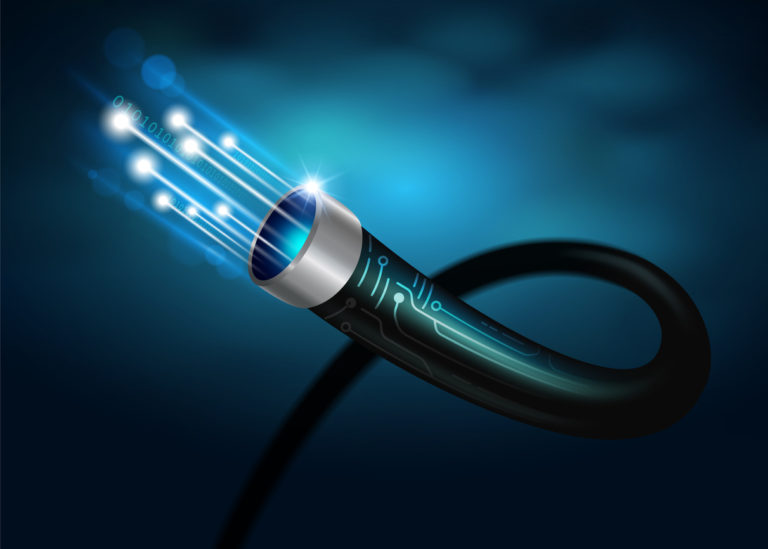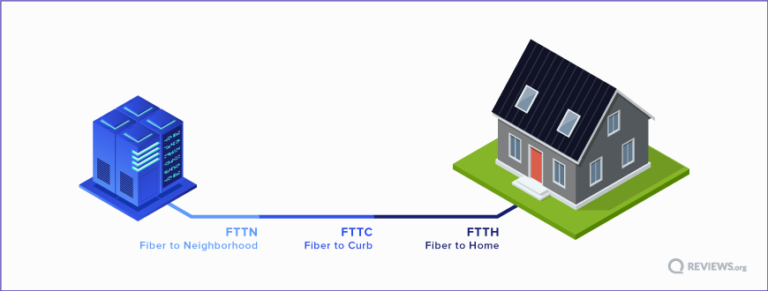Because of the newer technology behind it, fiber internet far surpasses DSL and cable internet in terms of internet connection speed and reliability. Still curious? Here’s more on how fiber internet works, why it’s worth the money—and how to get a fiber connection of your own. “Fiber-optic cable carries light very well over relatively long distances with low attenuation and distortion of the light signal,” says Frank Cornett, a retired electrical engineer for Intel. “In contrast to fiber-optic cable, which carries light with relatively low attenuation and distortion, copper wires significantly attenuate and distort the voltage signals they carry,” Frank explains. That’s a bad thing, and it gets worse. That’s why “a link made up of fiber can provide much faster data transfer than copper,” Frank says. That means faster load times, higher-quality streaming, and less mashing of the reload button when your favorite website won’t load fast enough. (Yes, we’re button mashers and we’re proud.) Like we mentioned, fiber-optic internet lines transfer data using modulated light instead of electricity. That gives them much higher bandwidth capacity, since they’re not bound by the physical limitations of electricity conducting through metal. Traditional copper wires used by DSL and cable internet were originally intended to transmit voice only, though, so they’re limited in the amount of data they can handle. But both DSL and cable internet speeds got better over the years, so you may not readily see the difference when you compare these types of internet plans. Some companies only offer one type of connection, but some providers like CenturyLink Internet and Xfinity Internet offer DSL, fiber, and cable options. Here’s a quick look at some fiber, cable, and DSL internet plans to compare. Fiber to the home or premises (FTTH or FTTP) means your fiber internet connection goes straight into your home. If your home isn’t already set up to receive a fiber connection, you may need your ISP to drill holes or even dig nearby. This is the holy grail of fiber connections. Fiber to the curb (FTTC) means your fiber connection goes to the nearest pole or utility box—not an actual concrete curb. After that, coaxial cables will send signals from the “curb” to your home. This means your connection is made up of part fiber-optic cables, part copper wires. Fiber to the node or neighborhood (FTTN) provides a fiber connection to hundreds of customers within a one-mile radius of the node. The remaining connection from the node to your home is often a DSL line that uses existing telephone or cable lines. For FTTN fiber internet, this is where things get tricky. The farther you live from the node, the longer the DSL line needs to be to reach your house—and the longer the line, the more attenuation and distortion you get, causing slower wireless internet access. “With FTTN, the DSL link from the node to the home amounts to a bottleneck in the overall link,” says Frank. We don’t know about you, but bottlenecks and internet don’t sound like a match made in heaven. Fiber internet uses a newer technology, and therefore tends to be more reliable and faster. You may not need 1,000 Mbps download speeds, but even if you grab a 100 Mbps fiber internet plan, you’ll likely see fewer outages and overall faster speeds than you would with a 100 Mbps cable or DSL plan. One other thing fiber internet offers that cable and DSL don’t is symmetrical download and upload speeds—meaning your upload fiber speed is the same as your download fiber speed. So if you pay for a 300 Mbps fiber connection, your upload speed should also be 300 Mbps. (With cable and DSL, upload speeds normally only rev up to an average of 10–15 Mbps.) Faster upload speeds are a huge boon to anyone who deals with large files or jumps into a lot of video calls. Right now, fiber is mostly available on the East Coast and in big cities—though there are a few small ISP startups offering fiber elsewhere. ALLO in Nebraska and Colorado and Endeavor Communications in Indiana are two that come to mind—and both scored in the top 10 in our fastest ISPs analysis. Here’s a quick look at some of the larger fiber internet providers in the US: Also check out the full Metronet review.

